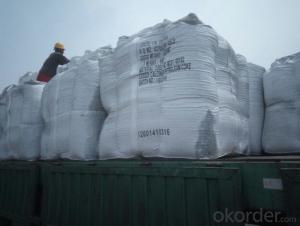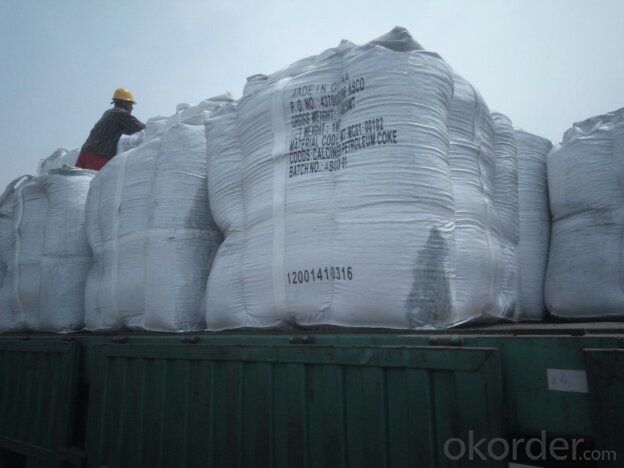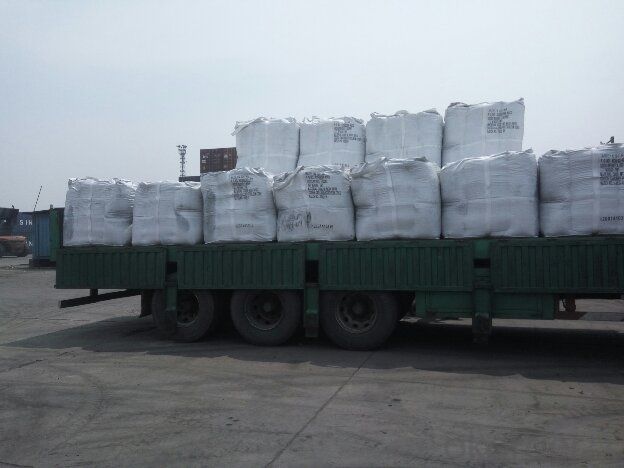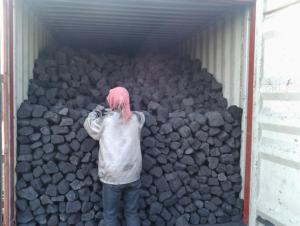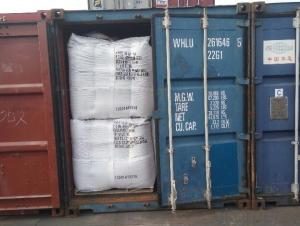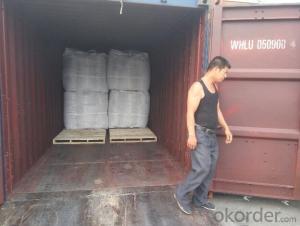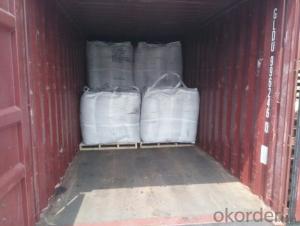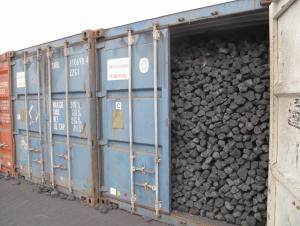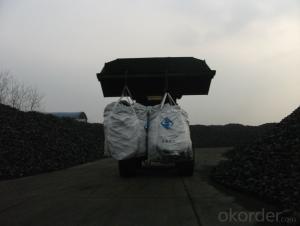10% Ash Foundry Coke for Foundry Plant
- Loading Port:
- Shanghai
- Payment Terms:
- TT OR LC
- Min Order Qty:
- 20 m.t.
- Supply Capability:
- 1000 m.t./month
OKorder Service Pledge
OKorder Financial Service
You Might Also Like
Brief Introduction
Foundry Coke is the main fuel of melting iron in the oven. It can melt the materials in the over, make the iron reach great heat, and keep good air permeability by sustain stock column. Thus, the foundry coke should have the characteristics of big block, low reactivity, small porocity, enough anti-crush strengh, low ash and low sulphur.
The coke handled by our cooperation is made from superior coking coal of Shanxi province. Provided with the advantages of low ash, low sulphur and high carbon. Our coke is well sold in European, American, Japanese and South-east Asian markets. Our owned Coke plant are located in Shanxi Province and supplying of you many kinds of coke.
we supply Foundry Coke long-term, its characteristic is best strength, low sulfur and phosphorus,thermal stability.
Specifications:
ASH % | 8% max | 10% max | 12% max |
V.M.% MAX | 1.5% max | 1.5% max | 2% max |
SULFUR % | 0.65% max | 0.65% max | 0.7% max |
MOISTURE | 5% max | 5% max | 5% max |
Size | 80mm-120mm,80-150,100-150mm, or as request | ||
Features
1. Our quality is always quite good and stable which is producing and packing according to customers' requirements.
2. Putting Client profile into first, achieved mutual benefit.
3. Good partner on business. It's a good and wise choice for customers' to purchase from us. It's our great honor to cooperate with you.
4. We can supply documents as follows:
- bill of loading,
-Invoice,
-Packing List
-Insurance
-standard inspection pictures of the container as specified by INSPECTORATE
-or more requested by buyer.
Pictures

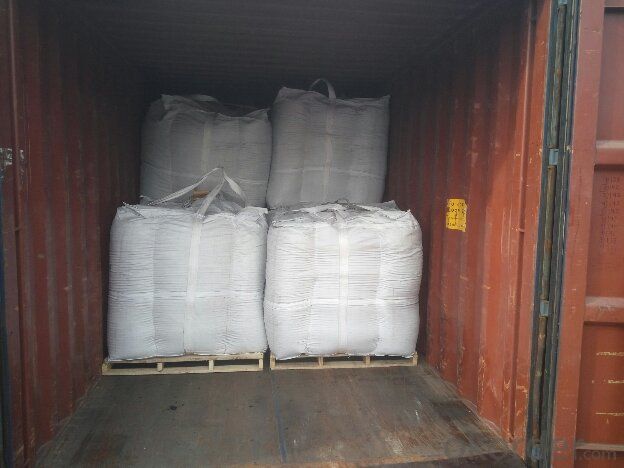
FAQ
1. What is the packing?
In 25kg bag/ In jumbo bags without pallet/ Two jumbo bags with one pallet/ or as customers’ request
2. What is the production capacity?
10 thousand tons per month
3 What is payment term?
Irrevocable LC at sight/ 20% down payment by T/T and 80% against BL copy byT/T/ or to be discussed
4 What is the service?
We will send sample to the third party(CIQ, CCIC, SGS,BV or to be discussed) for checking, and present the test certificate and loading repot of shipment.
- Q: How does carbon contribute to the hardness of steel?
- Carbon contributes to the hardness of steel through a process known as carbonization. When carbon atoms are introduced into the iron lattice of steel, they create interstitial solid solutions, causing the lattice to become distorted. This distortion prevents the iron atoms from sliding past each other easily, thereby increasing the resistance to deformation and making the steel harder. Increasing the carbon content in steel increases the strength and hardness, up to a certain limit. However, excessive carbon can also make the steel brittle, so it is important to find the right balance to achieve optimal hardness without compromising other properties of the steel.
- Q: How is carbon used in the electronics industry?
- Carbon is used in the electronics industry in various forms, such as carbon nanotubes and graphene, to enhance the performance of electronic devices. These carbon-based materials possess excellent electrical conductivity, high strength, and thermal properties, making them ideal for use in transistors, batteries, capacitors, and other electronic components. Additionally, carbon is used as a crucial element in the manufacturing of printed circuit boards and as a key component in the fabrication of LCD screens and touchscreens.
- Q: What are the impacts of carbon emissions on the spread of infectious diseases?
- The spread of infectious diseases is significantly impacted by carbon emissions. When fossil fuels like coal, oil, and natural gas are burned, they release large amounts of carbon dioxide (CO2) and other greenhouse gases into the atmosphere. These emissions contribute to climate change, which in turn affects the distribution and transmission of various infectious diseases. Changes in temperature are one of the main ways carbon emissions influence the spread of infectious diseases. As global temperatures rise, it creates favorable conditions for disease-causing agents and their vectors to survive and multiply. For example, warmer temperatures can expand the geographic range of disease-carrying insects like mosquitoes, which transmit diseases such as malaria, dengue fever, and Zika virus. Carbon emissions causing climate change can also disrupt ecosystems and alter the behavior of animals that serve as hosts or reservoirs for infectious diseases. Changes in migration patterns, breeding cycles, and hibernation can affect disease dynamics, making them harder to control. For instance, warmer temperatures may lead to an increase in tick populations, raising the risk of tick-borne diseases like Lyme disease. Moreover, carbon emissions contribute to air pollution, which negatively impacts respiratory health. Pollutants like particulate matter and nitrogen dioxide weaken the immune system, making individuals more vulnerable to respiratory infections such as influenza and pneumonia. These pollutants also worsen respiratory symptoms in people already infected with respiratory diseases. The effects of carbon emissions on the spread of infectious diseases extend beyond humans. Changes in climate patterns can disrupt agricultural systems, resulting in food insecurity and malnutrition. These conditions weaken the immune systems of vulnerable populations, making them more susceptible to infectious diseases. Recognizing the link between carbon emissions and the spread of infectious diseases is crucial in order to mitigate their impacts. Reducing carbon emissions by transitioning to cleaner energy sources and adopting sustainable practices can help mitigate climate change and limit the expansion of disease vectors. Additionally, investing in public health infrastructure and surveillance systems can improve our ability to detect and respond to outbreaks, minimizing their spread and impact on human populations.
- Q: What is carbon PC?
- Polycarbonate (PC), polycarbonate is a molecular chain containing [O-R-O-CO] chain thermoplastic resin according to the molecular structure of the ester can be divided into aliphatic, alicyclic and aromatic type of fat, which has the practical value of the aromatic polycarbonate, and bisphenol A polycarbonate as the most important, molecular weight is usually 3-10 million.Polycarbonate, English Polycarbonate, referred to as PC.PC is a kind of amorphous, odorless, non-toxic, highly transparent colorless or slightly yellow thermoplastic engineering plastics, has excellent physical and mechanical properties, especially excellent shock resistance, tensile strength, bending strength, compressive strength and high creep; small size is stable; good heat resistance and low temperature resistance, mechanical properties, stability in a wide range of temperature dimensional stability, electrical properties and flame retardant properties, can be used for a long time at -60~120 deg.c; no obvious melting point, a molten state at 220-230 DEG C; the molecular chain rigidity, melt viscosity and high water absorption resin; small, small shrinkage, high precision, good dimensional stability, permeability of films is small; self extinguishing materials; stable to light, but not UV resistance, good weather resistance; oil resistance, acid and alkali resistance, no oxygen acid and amine, Ketones are soluble in chlorinated hydrocarbons and aromatic solvents. They are easy to cause hydrolysis and cracking in water for a long time. Because of their poor fatigue resistance, they are prone to stress cracking, poor solvent resistance and poor wear resistance
- Q: How is carbon used in the production of fuel cells?
- Fuel cells utilize carbon in various ways during their production. The construction of electrodes is one of the primary applications of carbon in fuel cells. These electrodes, which consist of an anode and a cathode, are commonly made from carbon-based materials like graphite or carbon paper. These materials enable the electrochemical reactions within the fuel cell to occur by offering a conductive surface. Furthermore, carbon serves as a catalyst in fuel cells. Catalysts are substances that accelerate chemical reactions without being consumed in the process. Carbon-based catalysts, such as platinum or palladium, are frequently employed in fuel cells to facilitate the reactions that generate electricity. These catalysts enhance the efficiency of fuel-to-electricity conversion. Moreover, carbon is employed in the form of carbon nanotubes during fuel cell production. Carbon nanotubes exhibit unique properties such as high surface area and exceptional electrical conductivity, making them ideal for enhancing fuel cell performance. By providing a larger surface area for reactions to occur on, carbon nanotubes can improve the efficiency of fuel cell reactions. In summary, carbon plays a vital role in fuel cell production by providing the necessary materials for electrode construction, acting as catalysts for electrochemical reactions, and enhancing fuel cell performance through the utilization of carbon nanotubes.
- Q: What are the basic structures of iron carbon alloys?
- Pearlite: a mixture of ferrite and cementite, expressed in P. Microscopically, the cementite and the ferrite lamellae alternate with each other. Under equilibrium conditions, the carbon content of pearlite is 0.77%, and its strength is high. The plasticity, toughness and hardness of pearlite are between cementite and ferrite.A mixture of austenite and cementite at high temperatures, expressed in Le. Its mechanical properties are similar to those of cementite, with high hardness and poor plasticity.Ferrite, austenite and cementite are the basic phases of iron carbon alloy in the five kinds of structures.
- Q: What are the challenges of carbon capture and storage technology?
- One of the main challenges of carbon capture and storage technology is the high cost involved in implementing and maintaining the infrastructure. The capturing and storing of carbon dioxide emissions requires significant investment in equipment and facilities, making it financially burdensome for many industries. Additionally, the process of capturing carbon dioxide from flue gases can consume a considerable amount of energy, resulting in increased operational costs. Another challenge is the limited capacity for storing captured carbon dioxide. Finding suitable geological formations or reservoirs to safely store large quantities of carbon dioxide is a complex and time-consuming task. It requires thorough geological assessments and monitoring to ensure that the stored carbon dioxide will not leak back into the atmosphere or pose any environmental risks. Moreover, the transportation of captured carbon dioxide to storage sites can also be a logistical challenge. Developing a robust and efficient transportation infrastructure to move carbon dioxide from various emission sources to storage locations is crucial but can be difficult, especially in areas with limited existing infrastructure. Furthermore, there are concerns about the long-term security and permanence of stored carbon dioxide. It is essential to ensure that the stored carbon dioxide remains trapped underground indefinitely to prevent its release into the atmosphere. This requires continuous monitoring and verification processes to guarantee the integrity of the storage sites over extended periods. Lastly, public acceptance and regulatory frameworks pose significant challenges for carbon capture and storage technology. There may be public concerns about the safety and potential environmental impacts of storing large amounts of carbon dioxide underground. Establishing clear regulations and guidelines, as well as effective communication and public engagement, are essential to address these concerns and build trust in the technology.
- Q: What are the effects of carbon emissions on the stability of alpine ecosystems?
- Carbon emissions have significant effects on the stability of alpine ecosystems. Increased carbon dioxide levels contribute to higher temperatures, leading to changes in snowpack, glacial melt, and altered precipitation patterns. These changes disrupt the delicate balance of alpine ecosystems, impacting plant and animal species' distribution, abundance, and phenology. Additionally, increased carbon emissions contribute to ocean acidification, which affects the health of marine ecosystems that alpine ecosystems rely on for nutrients. Overall, carbon emissions threaten the stability and biodiversity of alpine ecosystems, with potential cascading effects on global climate systems.
- Q: What are the properties of carbon-based adhesives?
- Carbon-based adhesives have a range of properties that make them highly versatile and effective. Firstly, they have excellent adhesion capabilities, allowing them to bond to a wide variety of surfaces. Additionally, they exhibit high strength and durability, ensuring long-lasting and reliable adhesive connections. Carbon-based adhesives are also known for their resistance to heat, chemicals, and moisture, making them suitable for various applications in different environments. Furthermore, they can be easily applied and cured, allowing for efficient and quick assembly processes. Overall, the properties of carbon-based adhesives make them a popular choice for industries such as automotive, aerospace, electronics, and construction.
- Q: Carbon 60 related information
- The 60 is the solid carbon black, graphite and diamond. In addition, in recent years, scientists have discovered that some exist in new form of elemental carbon, which is more important in 1985 found C60. C60 is a molecule made up of 60 carbon atoms, similar to football. At present, people have made great progress in the research of C60, and the application of C60 in superconductor, material science and other fields is deepening. In our country, great achievements have been made in this field. For example, the metal doped C60 superconductor has been successfully developed in collaboration with the Physics Institute of Peking University and the Chinese Academy of sciences. It can be said that the discovery of C60 is of great importance to the study of carbon chemistry and even the whole field of chemistry.
Send your message to us
10% Ash Foundry Coke for Foundry Plant
- Loading Port:
- Shanghai
- Payment Terms:
- TT OR LC
- Min Order Qty:
- 20 m.t.
- Supply Capability:
- 1000 m.t./month
OKorder Service Pledge
OKorder Financial Service
Similar products
Hot products
Hot Searches
Related keywords
